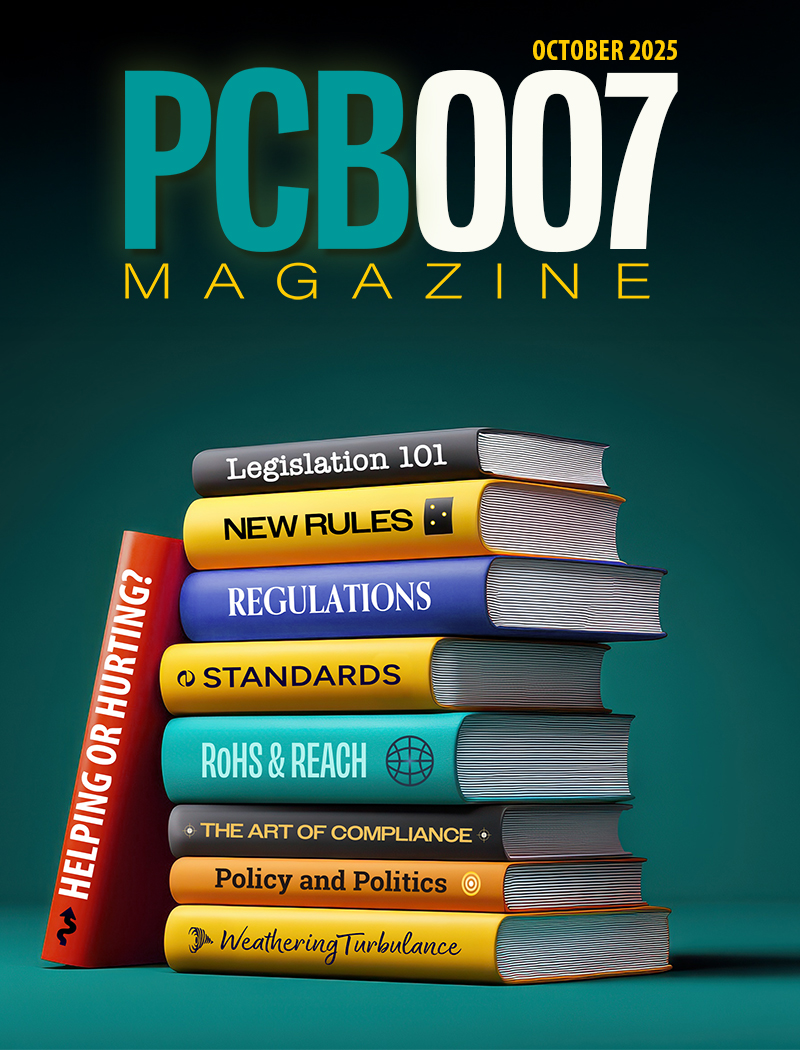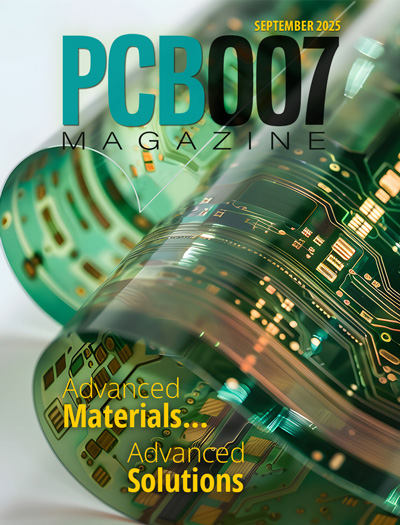-

- News
- Books
Featured Books
- pcb007 Magazine
Latest Issues
Current Issue
The Legislative Outlook: Helping or Hurting?
This month, we examine the rules and laws shaping the current global business landscape and how these factors may open some doors but may also complicate business operations, making profitability more challenging.

Advancing the Advanced Materials Discussion
Moore’s Law is no more, and the advanced material solutions to grapple with this reality are surprising, stunning, and perhaps a bit daunting. Buckle up for a dive into advanced materials and a glimpse into the next chapters of electronics manufacturing.

Inventing the Future With SEL
Two years after launching its state-of-the-art PCB facility, SEL shares lessons in vision, execution, and innovation, plus insights from industry icons and technology leaders shaping the future of PCB fabrication.
- Articles
- Columns
- Links
- Media kit
||| MENU - pcb007 Magazine
Estimated reading time: 1 minute
Temporary Process Change
Change is Good
Change is a given. While this adage may be quite true and normally a good thing, it can cause havoc in the documentation system of a printed circuit operation. To be successful, there must be a formal methodology to handle process change.
Without change, improvement stagnates and complacency sets in. Change is good, but the operative word is controlled change relative to the complex processes involved in producing a PCB. Many companies implement change on the fly, without any formal evaluation or approval process in place. This tends to not only be ineffective, but also to guarantee a finding with any customer or ISO auditor. The key to successfully navigating procedural change is to develop a robust temporary process change (TPC) program.
Process Overview
When crafting the program, the first thing to flesh out is the function that will serve as the watchdog of the system, which is the first mission-critical aspect of a TPC program. Creativity must certainly be fostered, while at the same time guarding against changes that could have a detrimental effect on the process. Redundant TPCs must also be avoided as there is no need to expend resources on a method that has been proven unsuccessful in the past. I would make a strong argument for process engineering to manage the system, but each shop is different; however, my only caveat would be to have a single entity overseeing the process. I would also highly recommend making this a standalone procedure/work instruction. Read the full column here.Editor's Note: This column originally appeared in the September 2013 issue of The PCB Magazine.
More Columns from The Right Approach
The Right Approach: Electro-Tek—A Williams Family Legacy, Part 1The Right Approach: Get Ready for ISO 9001 Version 6
The Right Approach: ‘Twas the Night Before Christmas (Harley-style)
The Right Approach: I Hear the Train A Comin'
The Right Approach: Culture Change is Key to a QMS
The Right Approach: Leadership 101—Be a Heretic, Not a Sheep
The Right Approach: Leadership 101—The Law of Legacy
The Right Approach: Leadership 101: The Law of Explosive Growth


